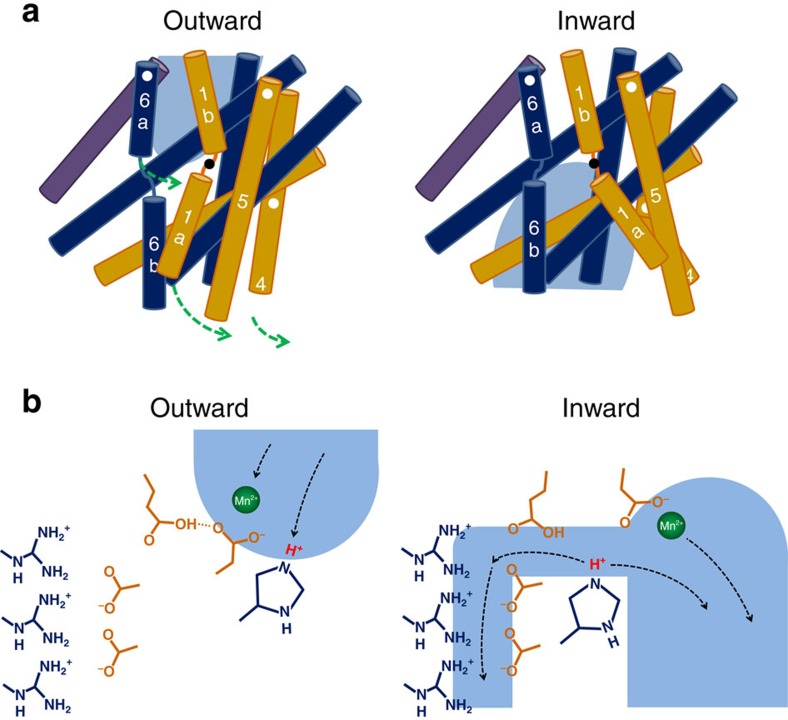Figure 7. Transport mechanisms.
(a) Schematic depiction of the alternate access mechanism in SLC11 transporters. Selected helices are shown, and moving parts are labelled. Hinges and direction of movements are indicated as circles and arrows. Aqueous access paths are shown in light blue. (b) Potential mechanism of H+-coupled Mn2+ cotransport. For the metal ion-binding site only the coordinating aspartate is depicted. In the outward facing state (left) the conserved histidine acts as proton acceptor. After the transition to an inward-facing state (right), the Mn2+ ion exits via the main aqueous path. The proton may either be released via the same path as Mn2+ or via a narrow aqueous cavity that is lined by conserved acidic and basic residues. Uncoupled H+ transport in human DMT1 and in the EcoDMT mutant E129A may also take place via this narrow aqueous cavity.

